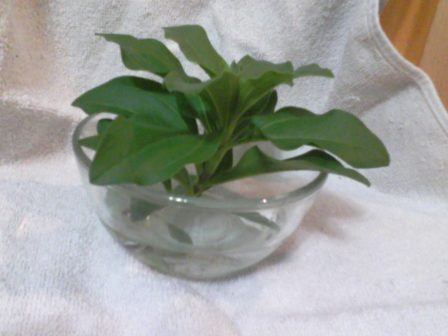Sudsy Saponins Save the Day
Charlotte Tenney, MA Integrative Health
Pre-industrial times are often portrayed as eras of filth due to a lack of soap. Nothing could be farther from the truth. Those living in closer contact with nature were able to observe that some plants offered them naturally occurring suds that worked very nicely for cleaning skin, hair and clothes. These plants frequently have the bonus of being pleasantly fragrant, as well as attractive in the landscape. These plants produce a substance called “saponins” that will froth up in the presence of water.
When a plant creates a substance, it is not altruistic; the compound is not for our convenience. In the case of saponins, the plants use the substance to ward off the predations of insects and other pests. The saponins are bitter, and mildly toxic, if consumed in large amounts. Native peoples found that they could take advantage of this toxic property to stun fish in streams and ponds, allowing them to be easily caught. Never the less, these saponins, in small quantities, act as anti-oxidants and medicines in a myriad of helpful ways in the body.
Saponin-rich plants have a long history of cultivation and many will be very familiar to even those who do not garden. Soapwort leaves and yucca root are used in commercial shampoo and touted for gentleness. The soapwort plant is sometimes called “Bouncing Bet” which was the name for a washer woman, who may have picked the soapwort leaves out of the garden in order to do the laundry. Soybeans are another raw material that is used to extract emulsifiers that bind water and oil for use in everything from foods to paint. Lavender is a classic ingredient for washing; its name is derived from the Latin base word for washing. Some of the saponins-rich plants are less known, but deserve more acclaim. The soapbark tree, (Quillaja saponaria) produces a substance that can be scraped from the inner bark and used directly as a foaming agent in shampoos, fire extinguishers and even root beer. Keep an eye out for “quillaja” on ingredient labels. The “Mountain Lilac” (actually not lilac but a Ceanothus) that grows in our local hills has blooms that will lather up in a handful of water, making them a quick way to wash up during a hike.
Saponins are a type of plant sugar that is composed of hydro-philic (water attracting) glycoside and a lipo-philic (oil attracting) triterpenes. In simple terms, that means that it bonds with both water and oil and can hold them together for salad dressing or bubbles.
Saponins are also useful for our internal health. Certain plant saponins, when consumed with meals, can bind with cholesterol and prevent it from being absorbed into the blood stream. The saponins themselves are too big a molecule to be absorbed through the gut wall, so never go beyond the digestive tract. This is an important feature since saponins-rich foods or supplements can lower cholesterol without risk to the liver, making them a safer option than statin drugs. The saponins encourage the growth of friendly bacteria in the gut and suppress the toxic ones. They are so good at this that they can even reduce the odor of fecal matter, prompting pet food producers to add yucca root to their products. Saponins also stimulate healthy immune function to protect against food-borne pathogens. Soapbark/quillajais even used to increase the effectiveness of vaccines for that very reason.
The list of edible plants that contain helpful saponins is long. Burdock root, a favorite vegetable called “gobo” in Japan, is well-known as a digestive tract tonic. Red clover blossoms and licorice root are frequently used in tea mixtures to “cleanse the blood” and tune up the immune response. Saponins show promise in anti-tumoral activity in the body, according to research cited in the Journal of Chemotherapy. (G. Dombardi, 1970). A good portion of what the saponin-rich plants can do, including things such as Fenugreek, Ginseng, and Paprika , is to reduce chronic inflammation in the body. Since we now know that inflammation is the common factor to many chronic diseases, this is no small thing.
If you ever look up an herb in a resource manual, you will find a string of mysterious chemical compounds listed. If you happen to see that it contains saponins, then you can deduce that the herb will reduce cholesterol, increase immune function and lower inflammation for a wide variety of conditions. Or, you may simply be able to use it to take a bath.
Category: Life Style








